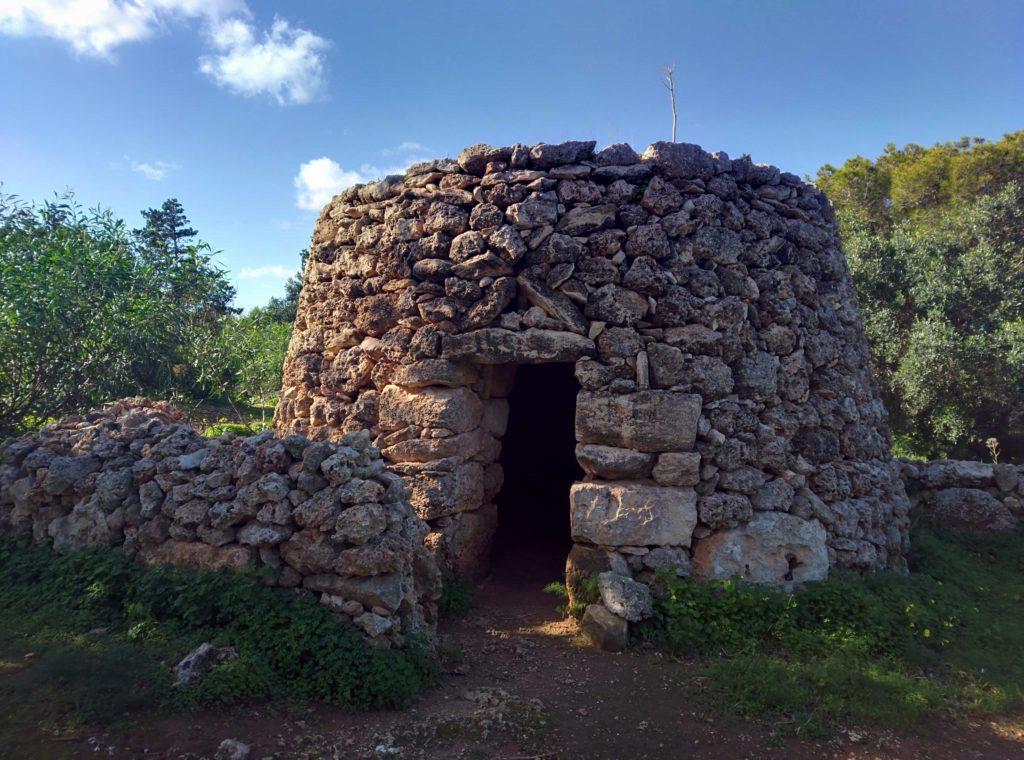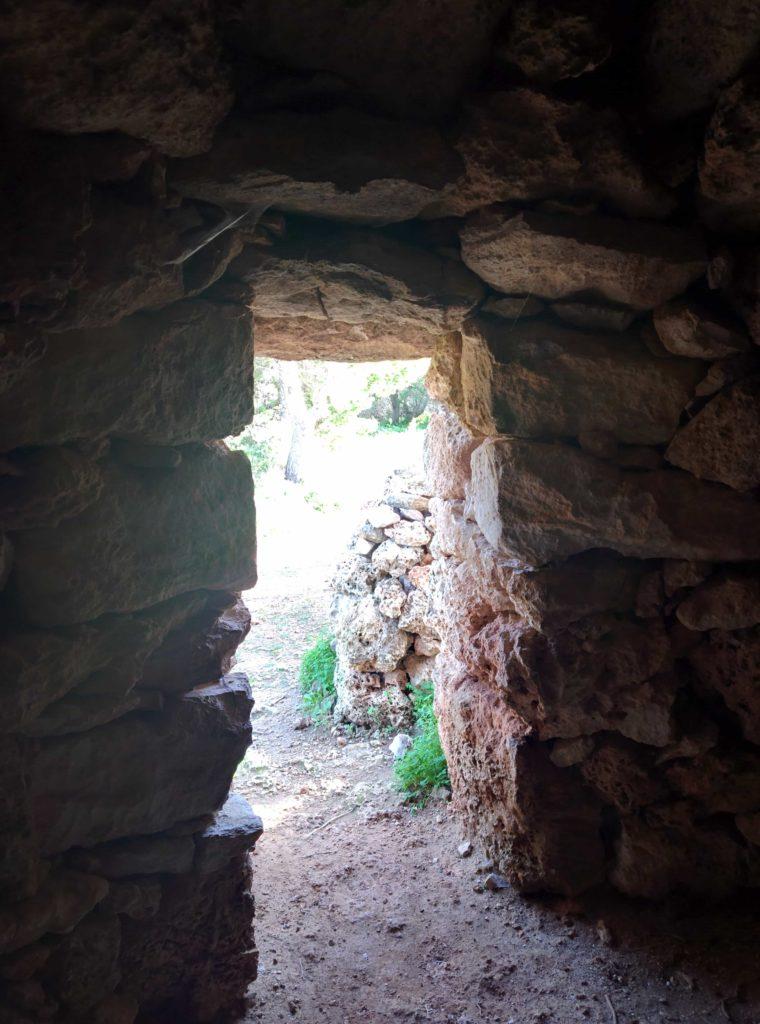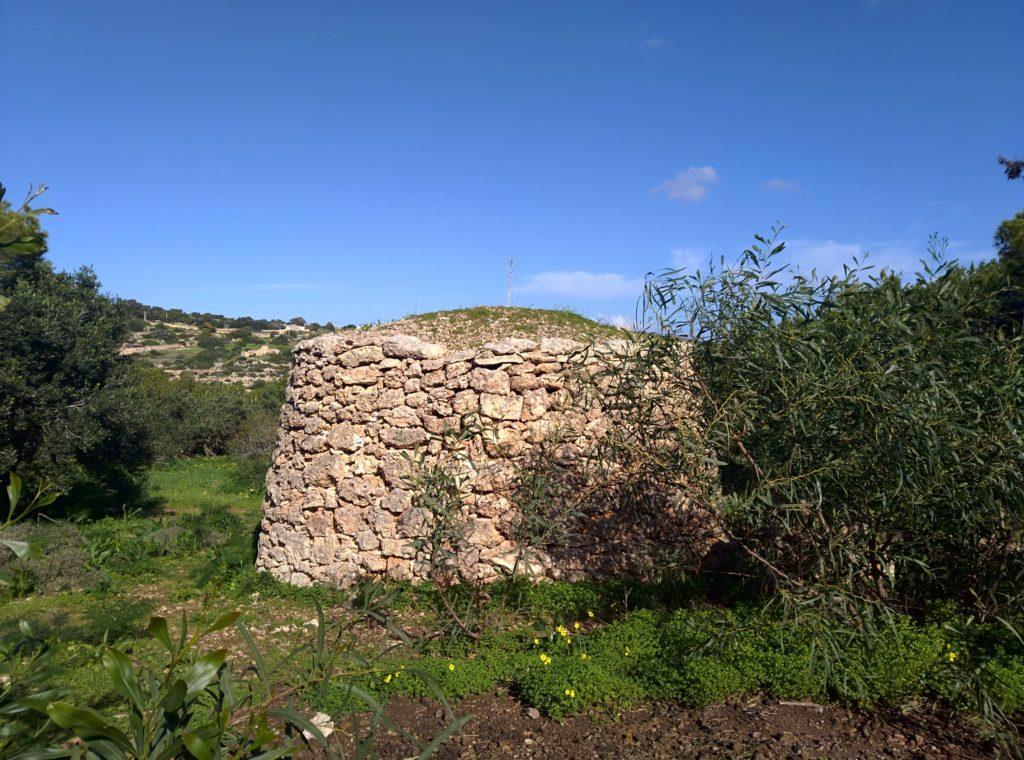
The Maltese girna, or stone shelter with corbelled roofing, is perhaps the most primitive vernacular structure found on the Maltese islands. Typically located in the Maltese countryside, it is essentially a single room built using unshaped and unplastered stones, designed to provide shelter for farmers and shepherds and/or their livestock.

The ceiling of the girna typically has a dome shape, while the outer wall is generally circular, although in rare cases it can also be square, rectangular, or oval. The convex roof is covered with fragments of rock, stone, and sand. The entrance is usually singular and oriented towards the east to maximize sunlight exposure, and typically does not have windows.
The stones used to construct the “girnas” are usually local stones found in the surrounding fields; loose coral limestone rocks. The “girnas” are built without foundations, yet they are quite sturdy, as this sturdiness depends on the skill of the stone placement. The architectural style of “girnas” is known as corbelled construction (“kileb” in Maltese), in that the weight of the stones in the upper row rests on those in the lower row, excluding the use of plaster or any type of cement. Corbelled stone huts often have double walls, with the space between them typically filled with rubble and gravel to prevent rainwater from seeping into the inner side. Some “girnas” may even have stone steps leading to the roof of the structure, providing a vantage point to oversee the land and crops.

It’s important to understand the necessity of these simple yet complexly constructed shelters, as farmers used them not only as shaded resting places during the scorching heat of the Maltese summer but also as shelters for their livestock during the rainy season. They could also serve as storage spaces for crops or for drying certain types of fruits and vegetables before selling them at the market, such as figs, tomatoes, or carobs.
Sources:
http://livinginmalta.com/miscellaneuos/maltese-girna/
